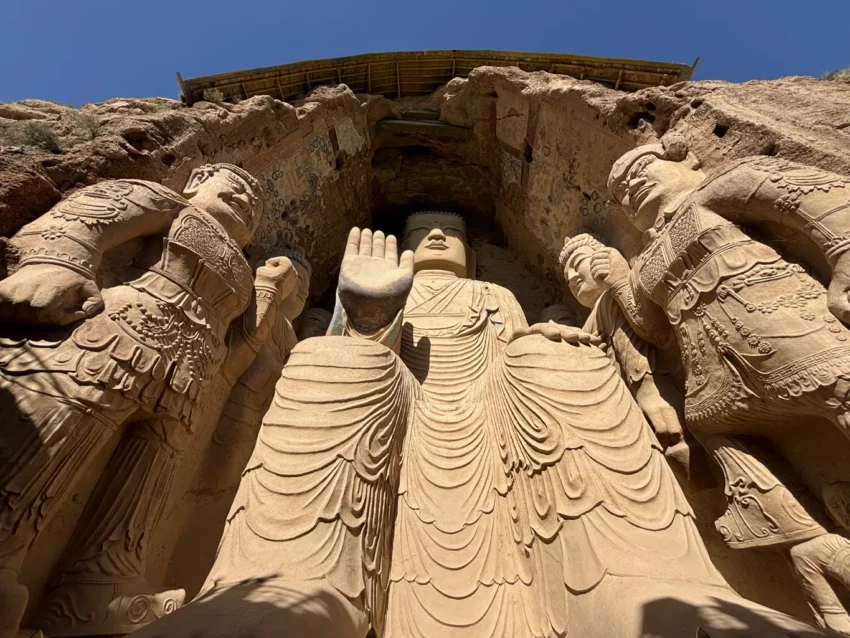Tianti Mountain Grottoes: A Journey Through Time
The Tianti Mountain Grottoes, also known as Tiantishan Caves, are a treasure trove of Buddhist art and history. Located in the Liangzhou District of Wuwei, Gansu, China, these caves have witnessed centuries of religious devotion, artistic creation, and natural wear.
Get your dose of History via Email
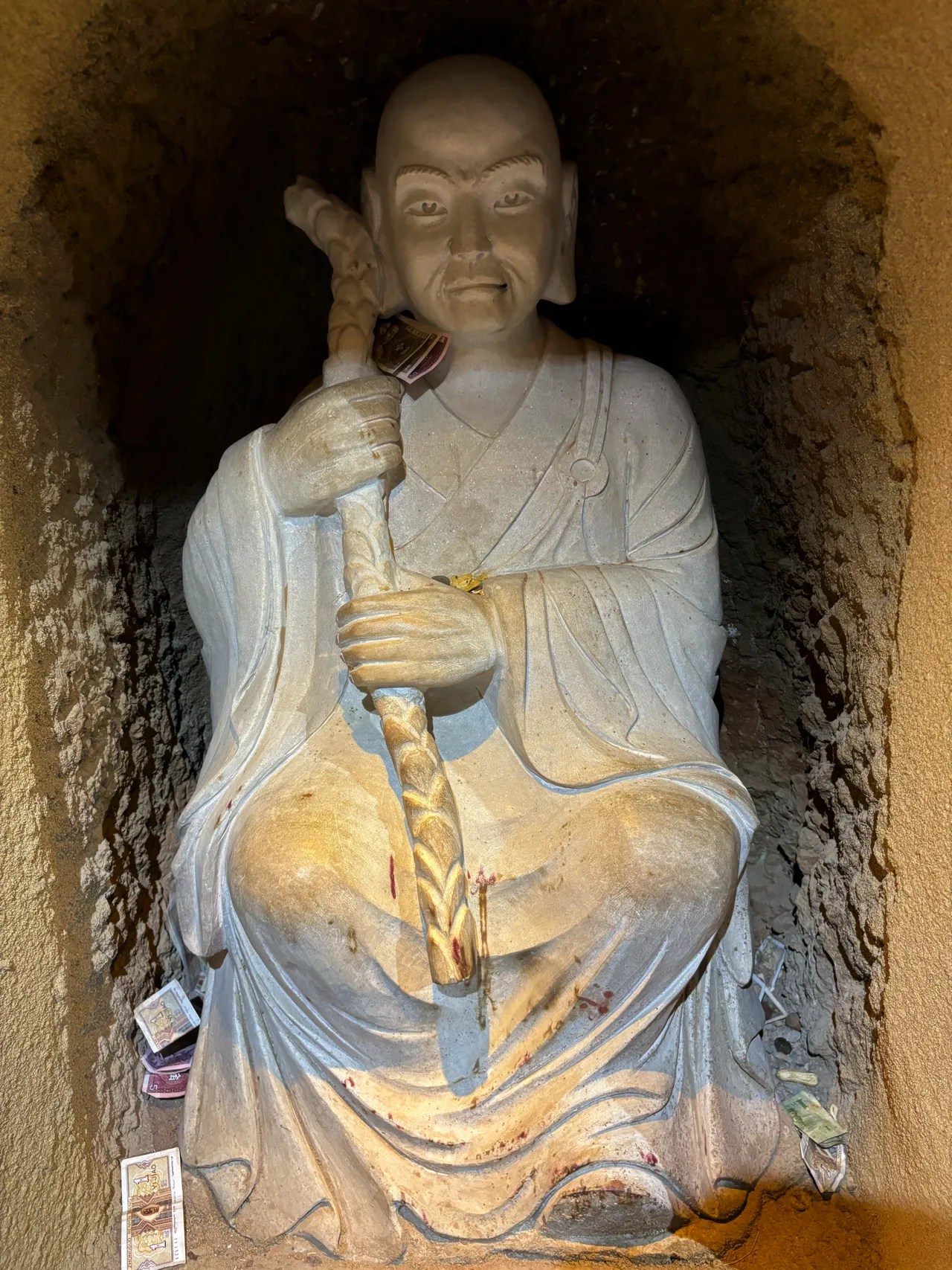
Origins and Historical Significance
The grottoes were first constructed during the Northern Liang Dynasty, between 412 and 439 AD. Historical texts, like the Spring and Autumn Annals of the Sixteen Kingdoms, mention that King Juqu Mengxun initiated the creation of these caves. He aimed to honor Buddha and seek spiritual solace away from the impermanence of city life.
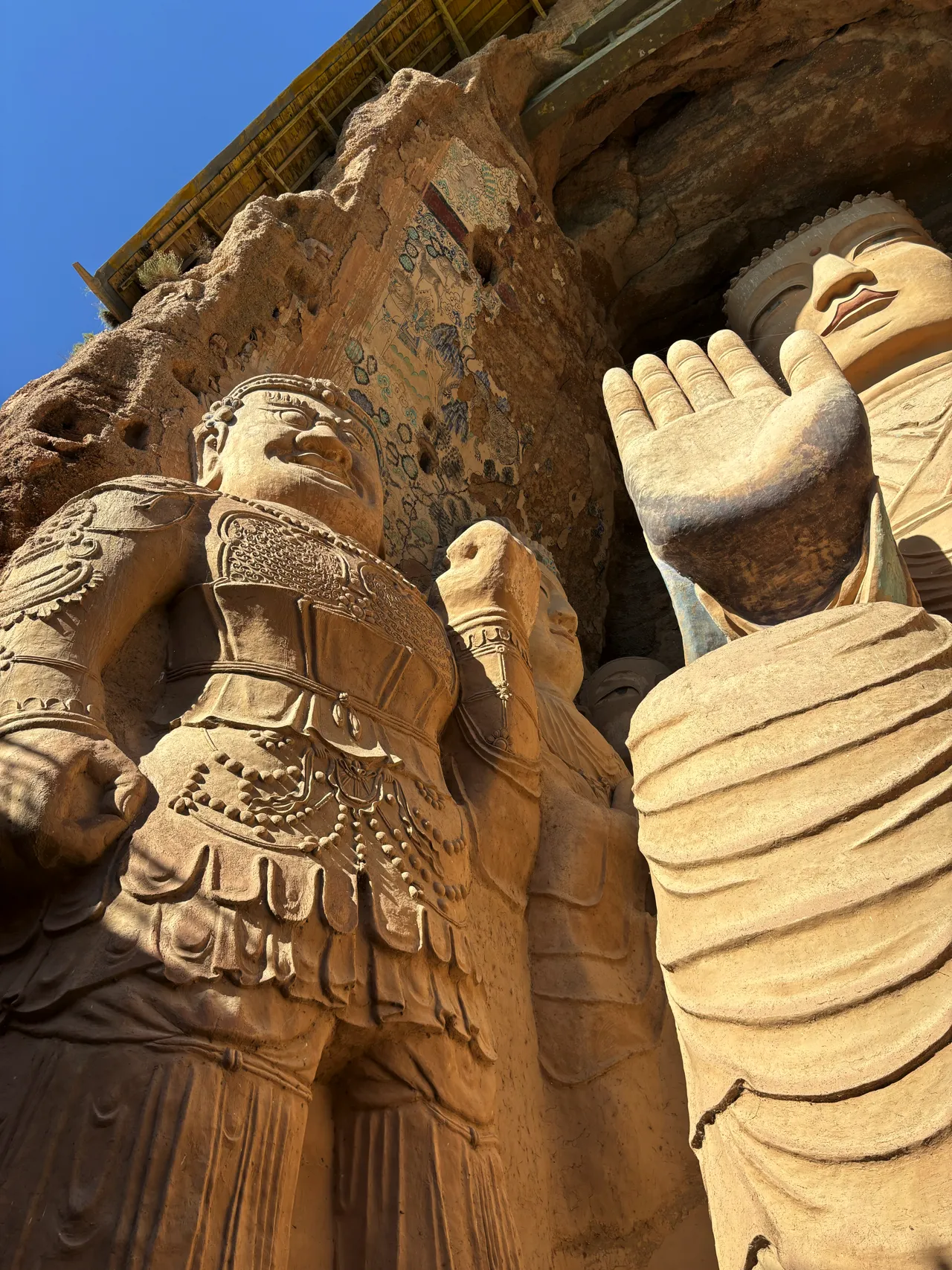
During the Tang Dynasty, the grandeur of Tiantishan was well documented. The caves were described as “ever-changing” and “amazingly dazzling,” with their intricate carvings, sculptures, and ceremonies reflecting the deep religious fervor of the time. The site’s reputation as a significant Buddhist center only grew, influencing the creation of other grottoes across China.
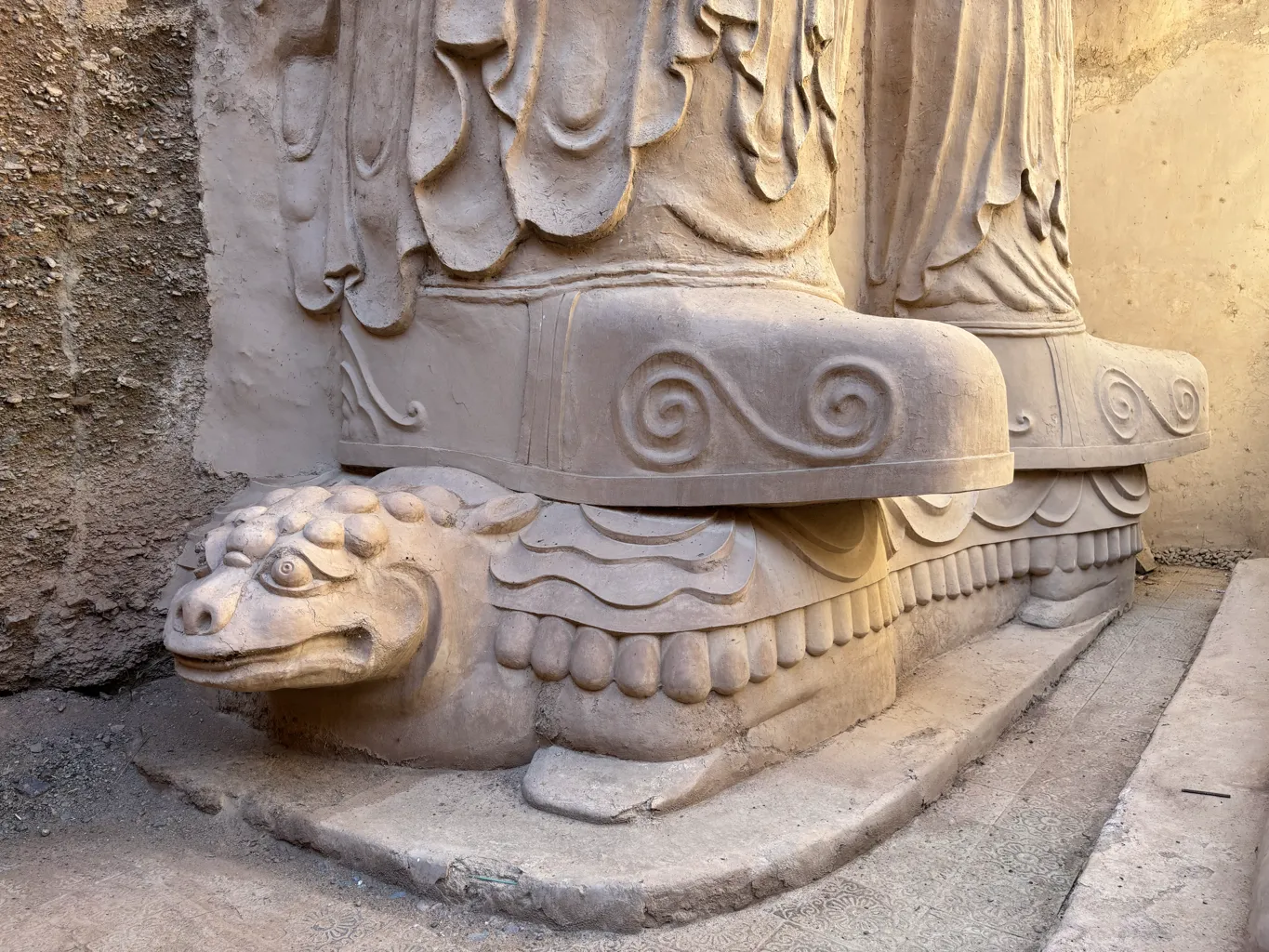
The Architectural Marvel of Cave No. 13
Among the 19 identified caves, Cave No. 13 stands out for its sheer scale and artistic beauty. This cave, with its open-sided vaulted ceiling, measures 30 meters in height, 19 meters in width, and 6 meters in depth. The central figure is a 28-meter-tall statue of Shakyamuni Buddha, flanked by statues of his disciples and two Bodhisattvas, each standing 21 meters tall. The walls are adorned with intricate paintings that span multiple dynasties, showcasing the evolution of Buddhist art in China.
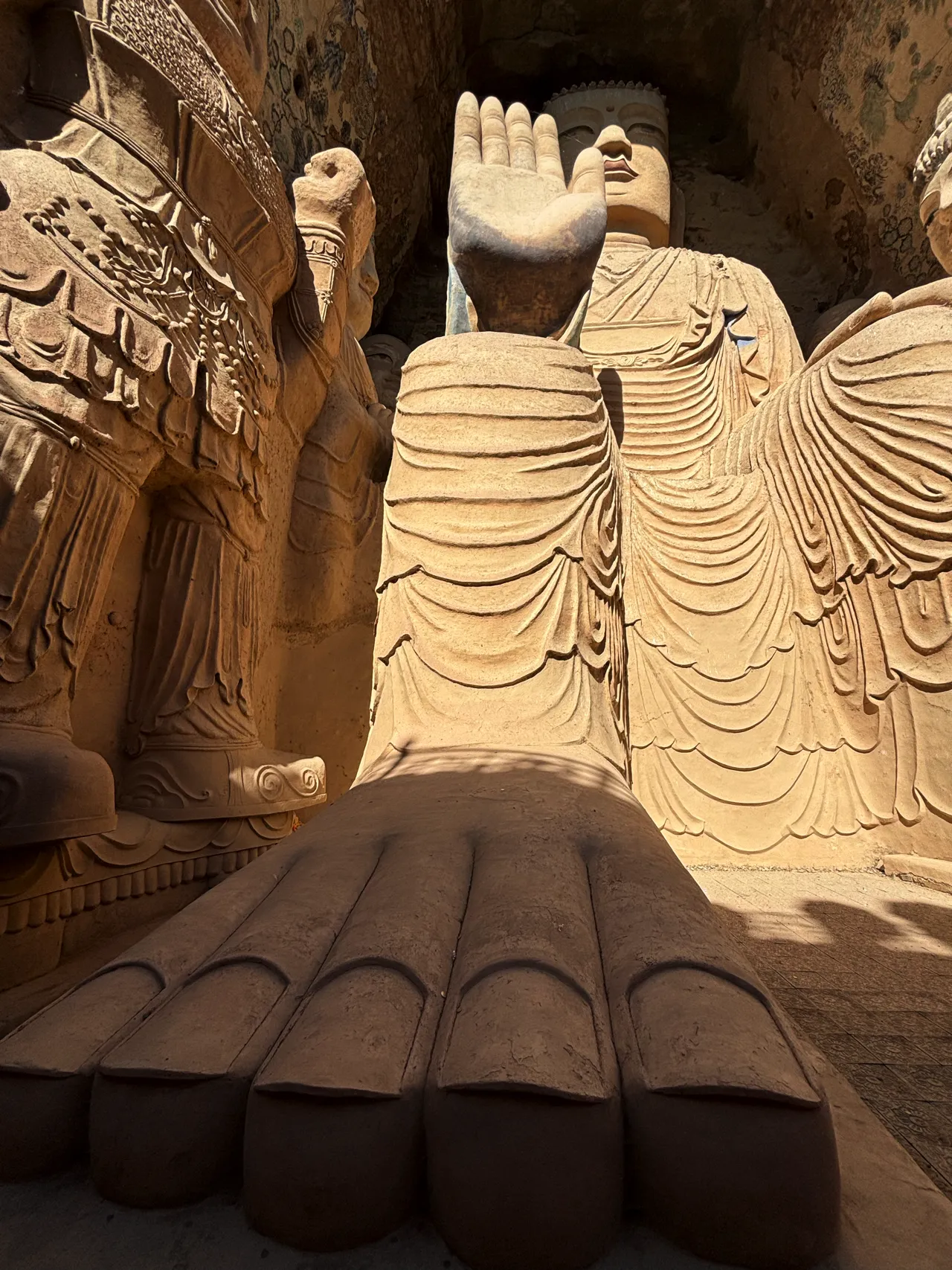
Decline, Preservation, and Legacy
The Tianti Mountain Grottoes gradually faded from the historical record after the Tang Dynasty. However, despite the loss of historical documentation, the site continued to attract attention. Unfortunately, natural disasters took their toll. An earthquake in 1927 caused significant damage, leading to the collapse of some caves.
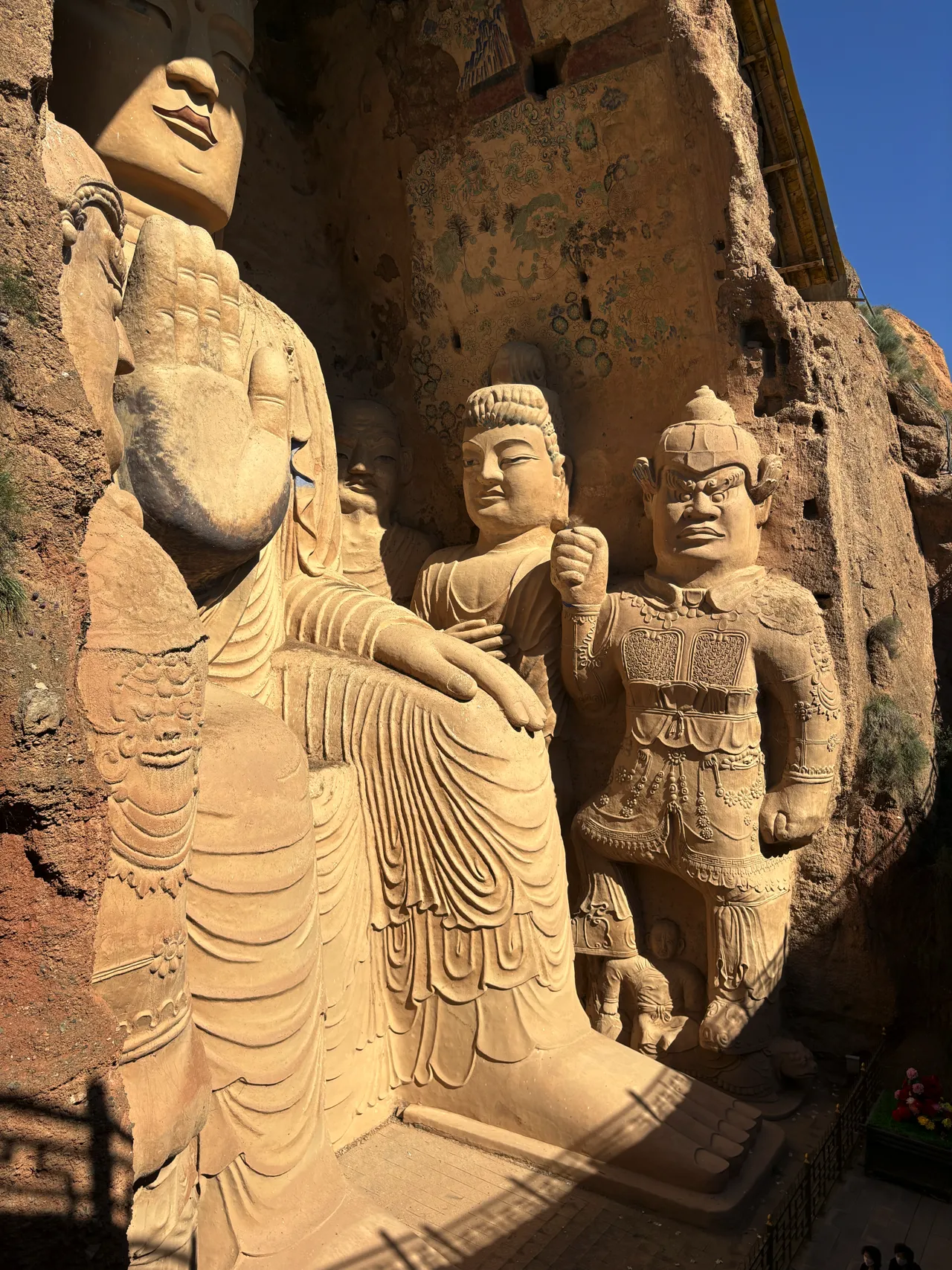
In the 1950s, the significance of the site was recognized, but a new challenge emerged. The construction of the Huangyang Reservoir threatened to submerge two of the three tiers of caves. Despite efforts to document and preserve the site, much of the original artwork was lost or damaged. Some statues and murals were relocated to museums, but many treasures were left to the mercy of time and the elements.
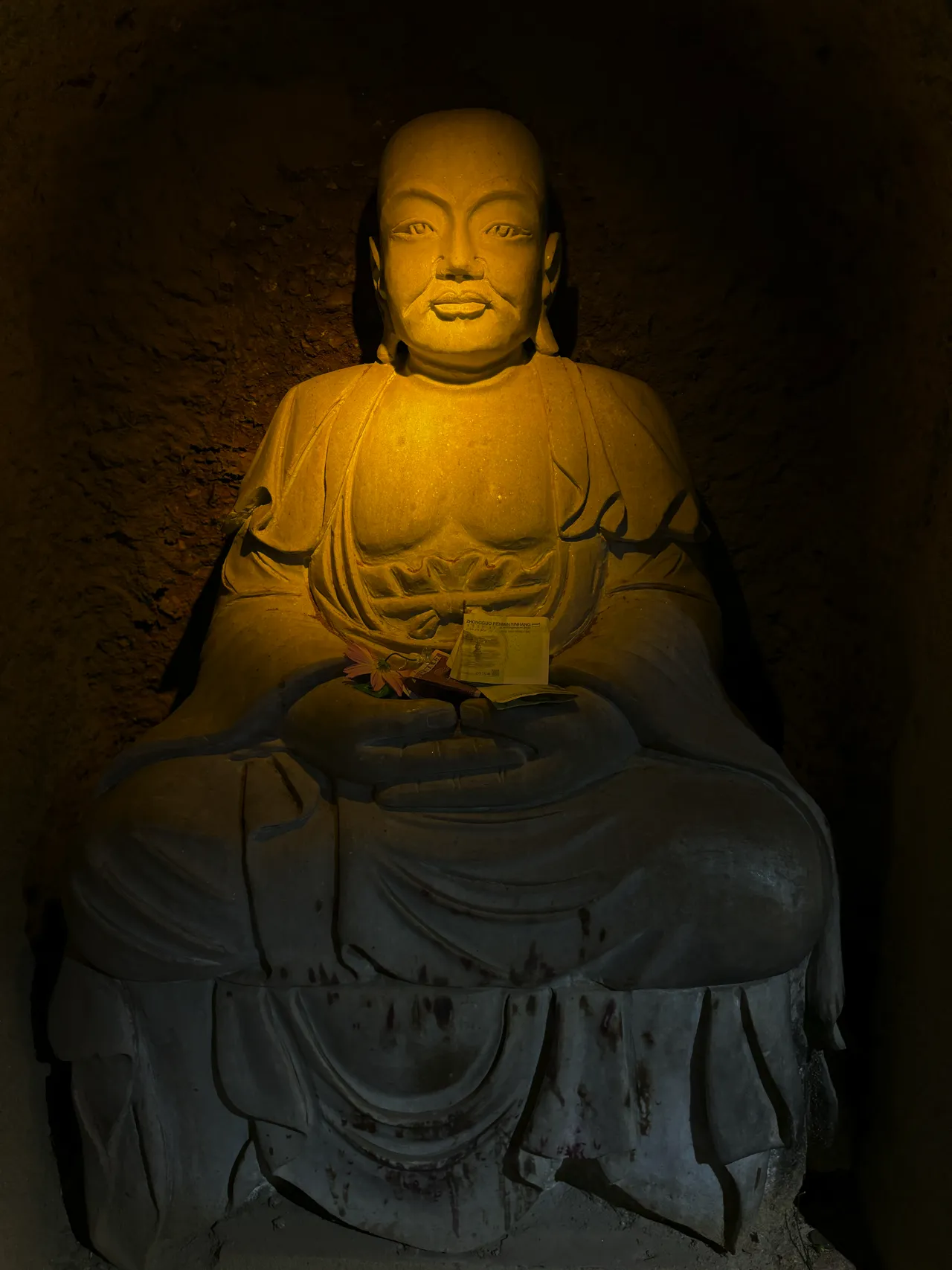
The Enduring Legacy
In 2001, the Chinese government designated the Tianti Mountain Grottoes as a Major Historical and Cultural Site Protected at the National Level. This recognition underscores the grottoes’ importance as one of the earliest and most influential Buddhist sites in China. Despite the challenges, the Tianti Mountain Grottoes remain a testament to the enduring legacy of Buddhist art and culture.
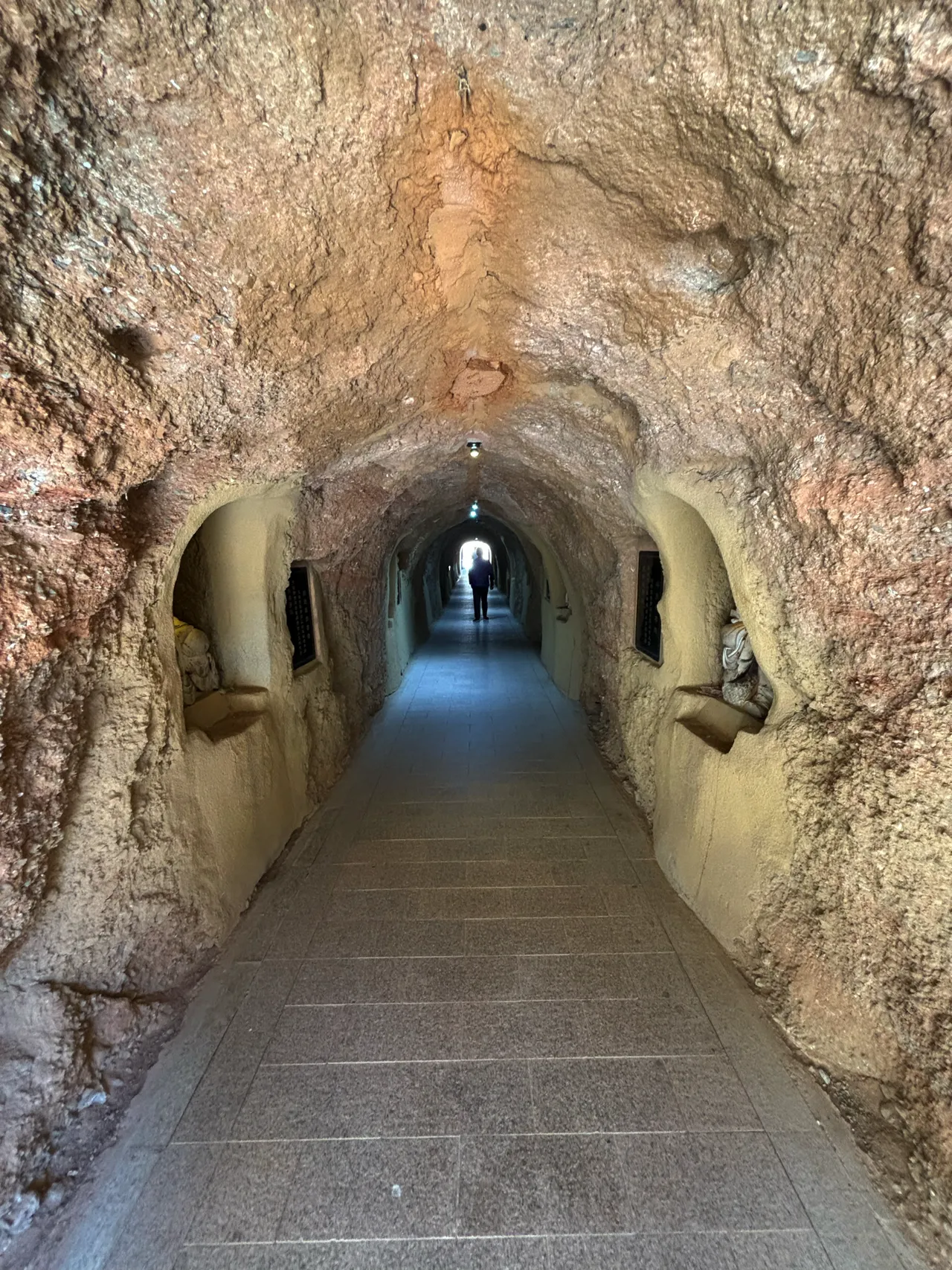
The site continues to inspire awe and reverence, reminding us of the spiritual and artistic achievements of those who came before.
Sources:
Signs at the site itself
Wikipedia

